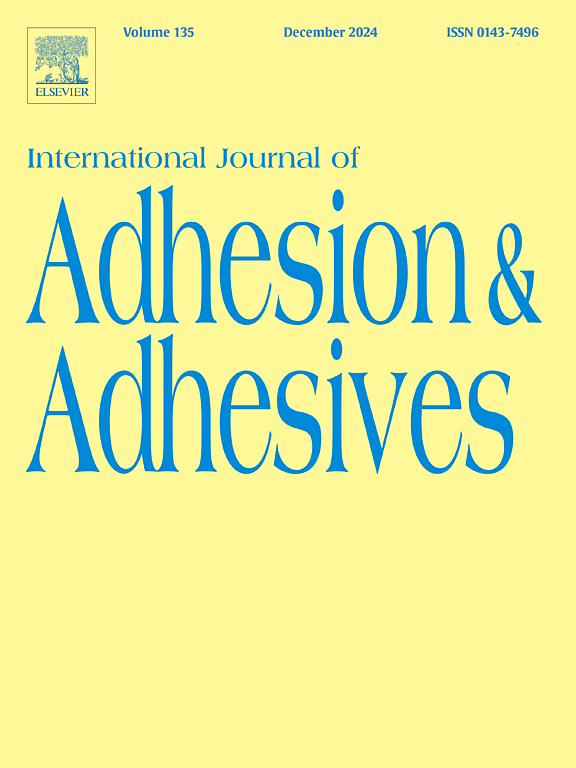An electrically conducting adhesive paste based on adhesive exopolysaccharide of Priestia aryabhattai KAG -18
IF 3.2
3区 材料科学
Q2 ENGINEERING, CHEMICAL
International Journal of Adhesion and Adhesives
Pub Date : 2025-01-28
DOI:10.1016/j.ijadhadh.2025.103957
引用次数: 0
Abstract
Conventionally, lead/tin alloy-based solders, lead-free (Sn/Ag, Sn/Ag/Cu) solders, and metal-based ECAs are used for fabrication of electronic circuits. However, they have limitations such as low strength of joints, toxic flux materials, higher processing temperature, and fatigue. Although, recently metal-free ECAs based on graphite/carbon black/carbon nanotubes have drawn attention, the research on such ECA pastes is mainly focused on electrical conductivity, neglecting their binding strength. In the present study, the adhesive exopolysaccharide of Priestia aryabhattai KAG-18 (EPS/KAG-18) (5.0 % w/v) showed highest tensile strength of 1.5 ± 0.153 MPa using paper as substrate. EPS/KAG-18 was a heteropolysaccharide containing glucose, 11.0 %; galactose, 71.0 % and glucuronic acid, 18.0 %. Three ECA pastes i.e. KAG-18/C1, KAG-18/C2, and KAG-18/C3 were prepared by blending activated charcoal (20 %, w/w) with EPS/KAG-18. Upon TGA/DSC profile indicated ECA pastes were stable up to 250 °C, without glass transition. The XRD curves of ECAs, suggested amorphous nature of ECAs. The films of ECA on PCB exposed to different temperatures showed no deformation at −80, 30 and 150 °C. Overall, films prepared using KAG-18/C3 paste was uniform as indicated by surface roughness of the films. With increase in the shear rate, the viscosity of the three ECAs was found to decrease indicating their shear thinning or pseudo plastic behavior. The ECA pastes showed higher G′ than G″, in the order KAG-18/C2<KAG-18/C1< KAG-18/C3 which indicated their gel-like behavior. The tensile strength of the paper specimens bonded using ECAs were found to be in the order: KAG-18/C1<KAG-18/C2<KAG-18/C3 i.e.0.19 ± 0.021 MPa, 0.541 ± 0.069 MPa and 1.09 ± 0.099 MPa, respectively. As the content of adhesive biopolymer EPS/KAG-18 was increased from 10.0 % (w/w) to 15.0 (w/w) in KAG-18/C1and KAG-18/C2 pastes, respectively, the conductivity of these pastes also increased. The KAG-18/C2 paste could be used also as solder paste for fabrication of electric circuit on PCB board and cellulose paper.
求助全文
约1分钟内获得全文
求助全文
来源期刊

International Journal of Adhesion and Adhesives
工程技术-材料科学:综合
CiteScore
6.90
自引率
8.80%
发文量
200
审稿时长
8.3 months
期刊介绍:
The International Journal of Adhesion and Adhesives draws together the many aspects of the science and technology of adhesive materials, from fundamental research and development work to industrial applications. Subject areas covered include: interfacial interactions, surface chemistry, methods of testing, accumulation of test data on physical and mechanical properties, environmental effects, new adhesive materials, sealants, design of bonded joints, and manufacturing technology.
 求助内容:
求助内容: 应助结果提醒方式:
应助结果提醒方式:


